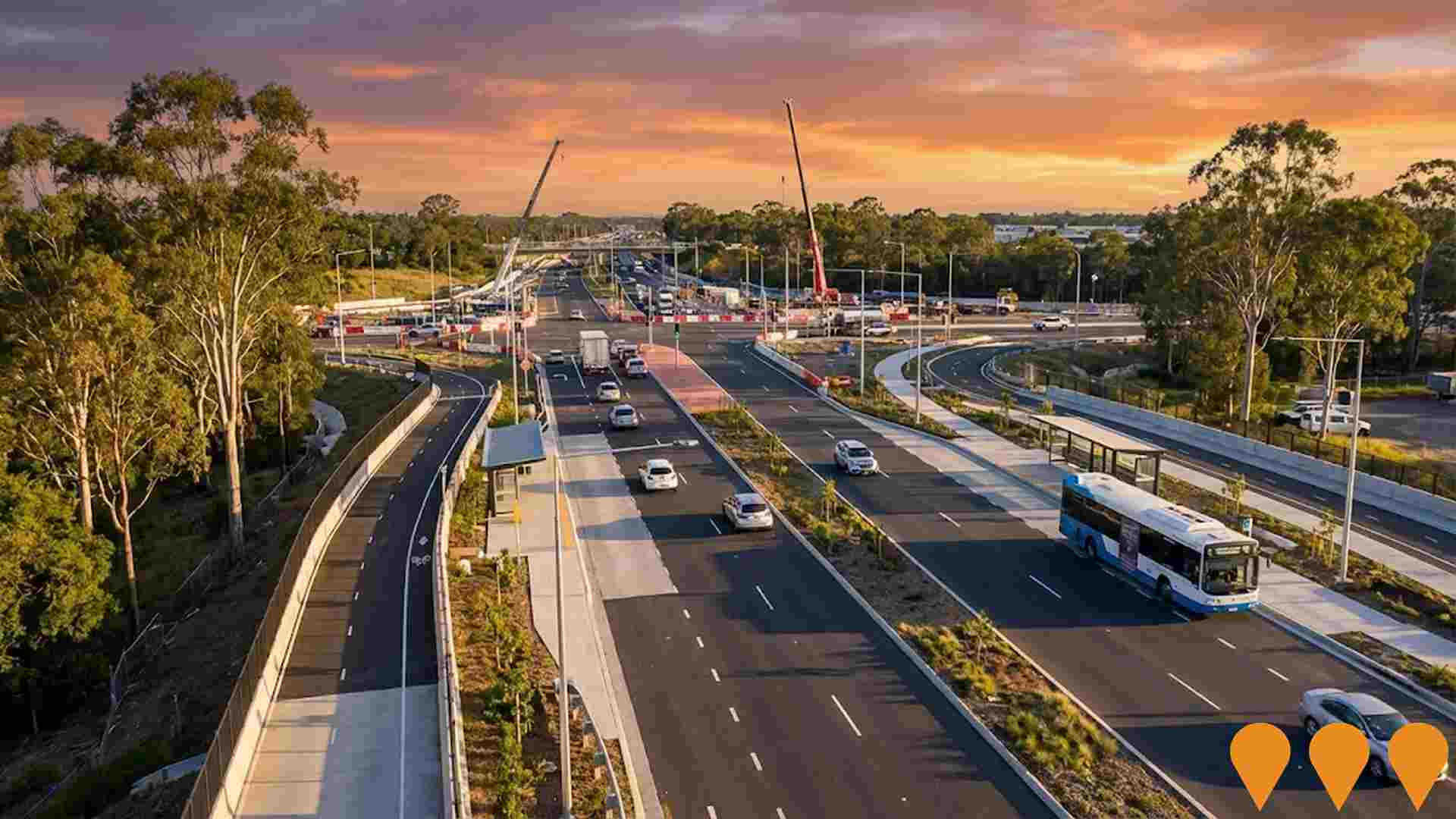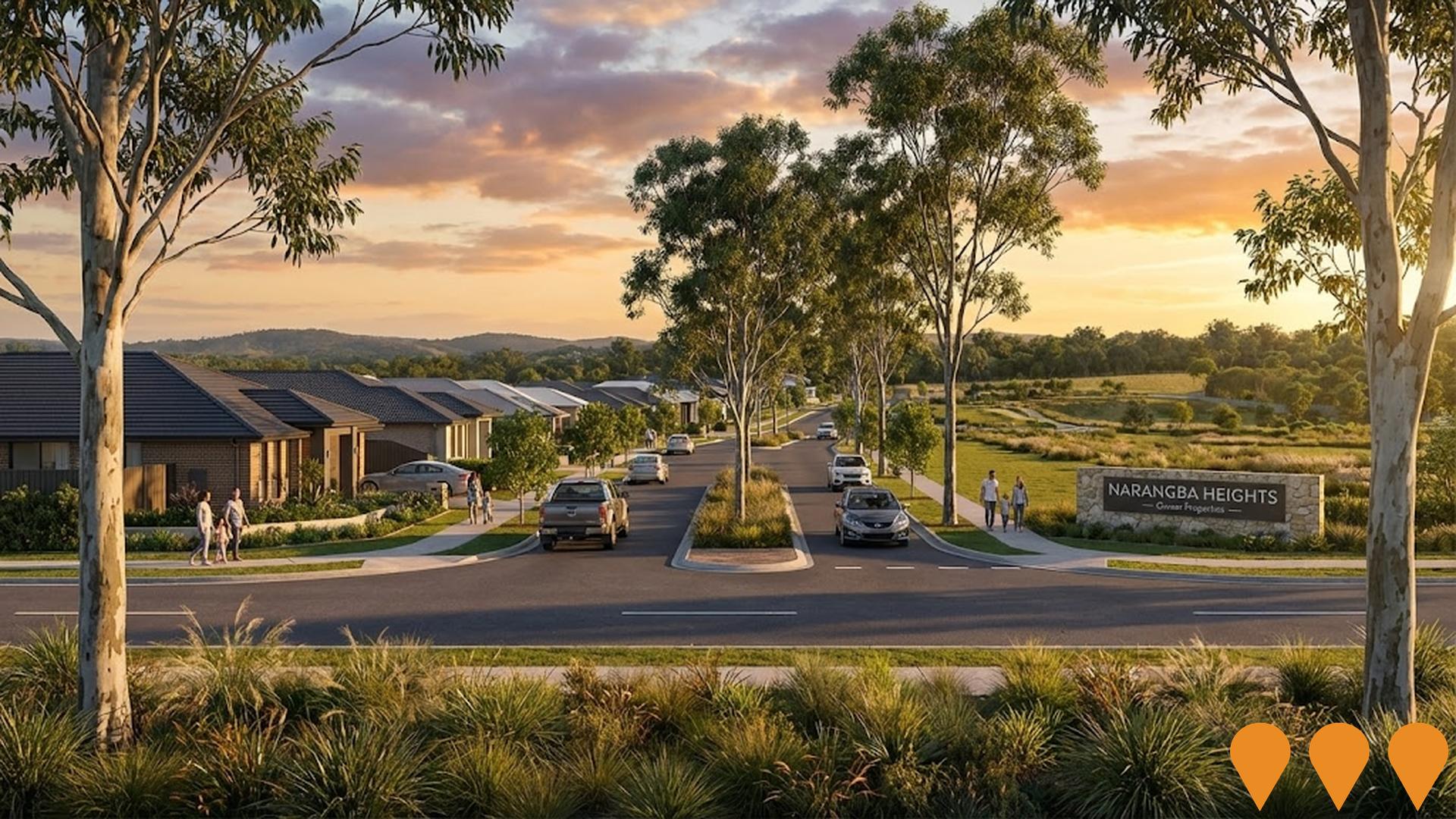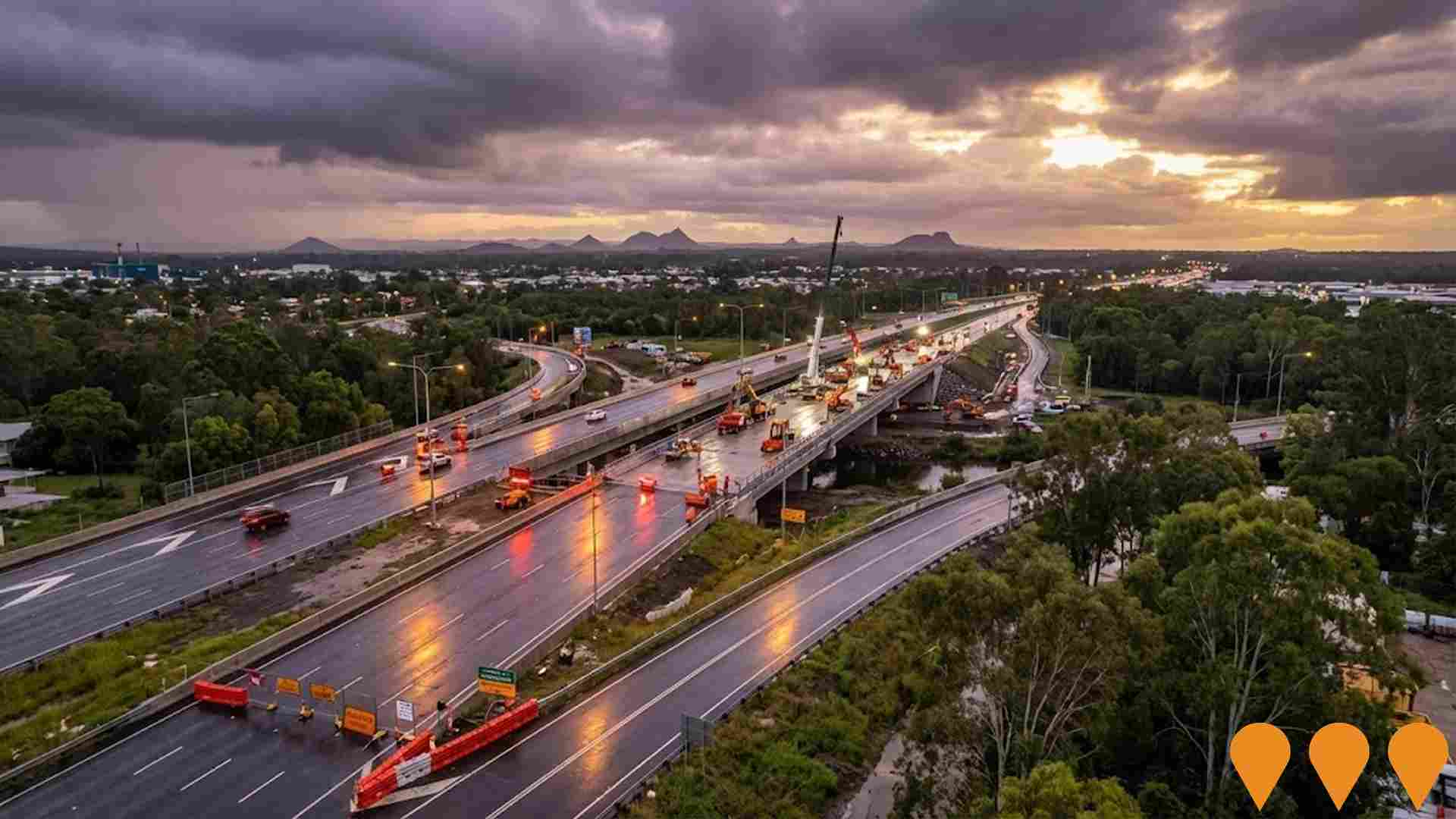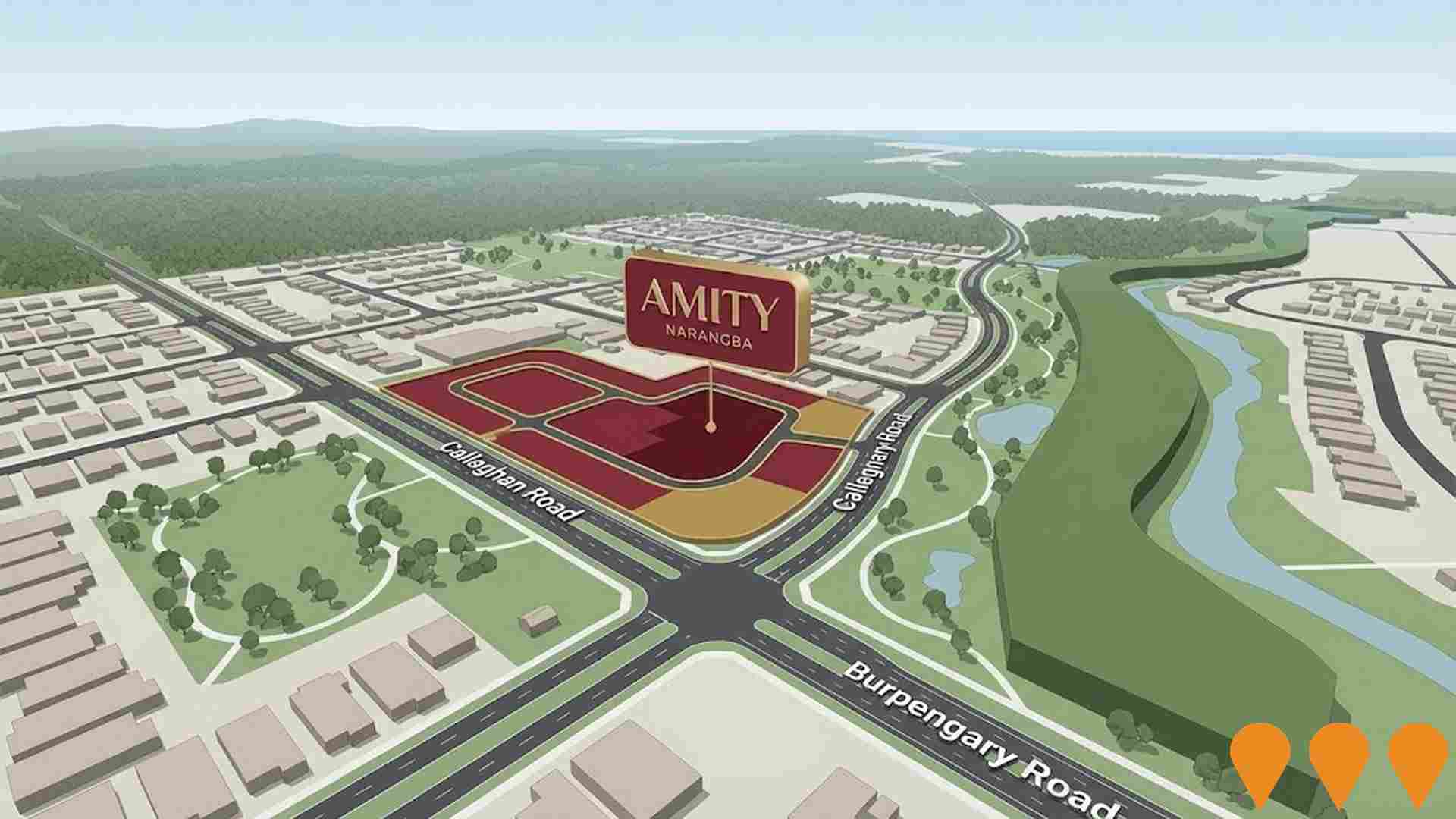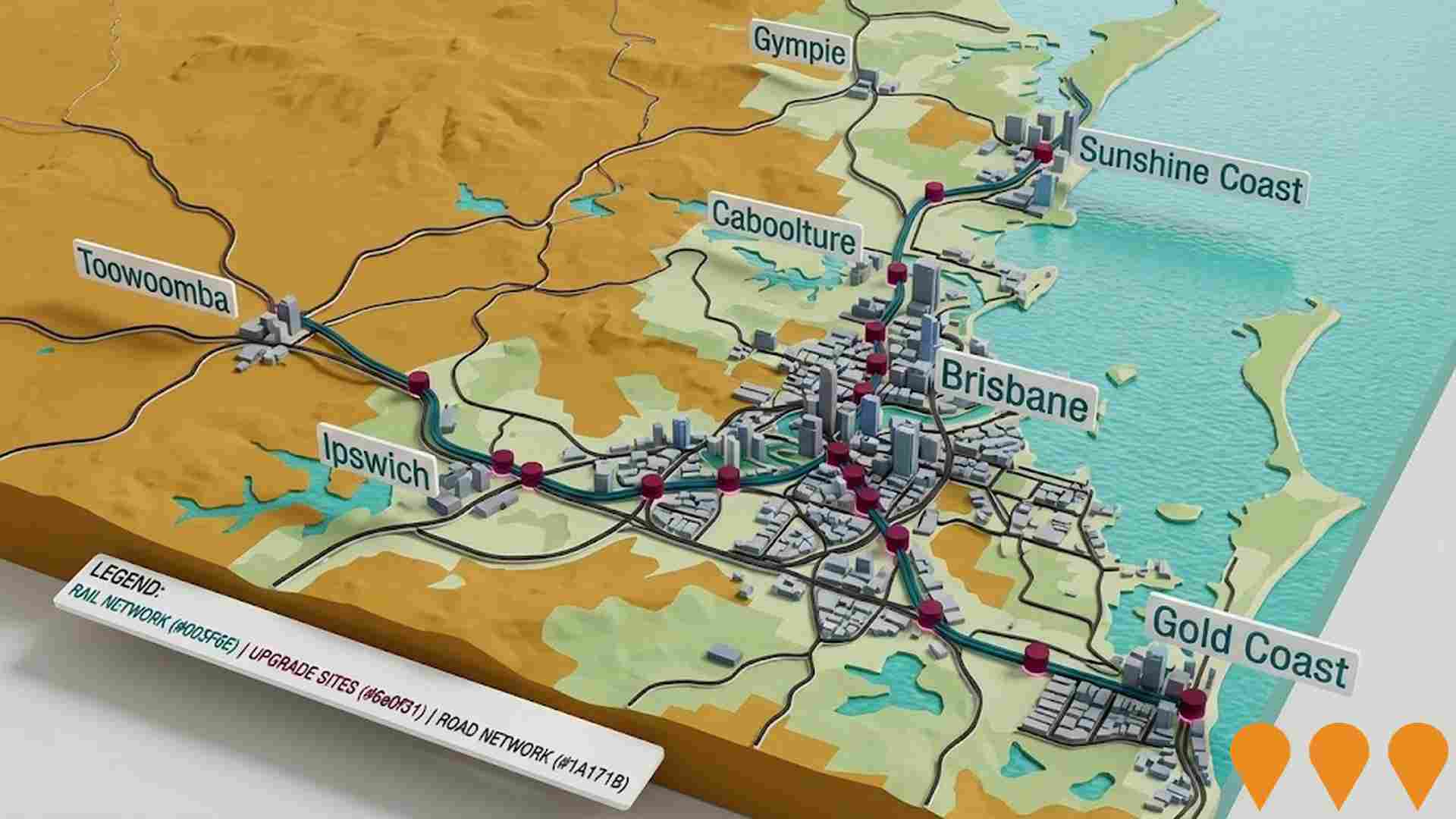Chart Color Schemes
est. as @ -- *
ABS ERP | -- people | --
2021 Census | -- people
Sales Activity
Curious about local property values? Filter the chart to assess the volume and appreciation (including resales) trends and regional comparisons, or scroll to the map below view this information at an individual property level.
Find a Recent Sale
Sales Detail
Population
Dakabin lies within the top 10% of areas nationally in terms of population growth performance according to AreaSearch analysis of short and medium-term trends
Dakabin's population is around 6,229 as of Nov 2025. This reflects an increase of 954 people since the 2021 Census, which reported a population of 5,275 people. The change is inferred from the estimated resident population of 5,969 in June 2024 and an additional 129 validated new addresses since the Census date. This level of population equates to a density ratio of 1,118 persons per square kilometer. Dakabin's growth of 18.1% since the 2021 census exceeded the national average of 8.9%. Population growth was primarily driven by interstate migration contributing approximately 47.2% during recent periods.
AreaSearch adopts ABS/Geoscience Australia projections for each SA2 area, released in 2024 with a base year of 2022. For areas not covered and years post-2032, Queensland State Government's SA2 area projections released in 2023 based on 2021 data are adopted. These state projections do not provide age category splits; hence proportional growth weightings aligned with ABS Greater Capital Region projections released in 2023 based on 2022 data are applied where utilised. A significant population increase is forecast for Dakabin, with an expected growth of 1,667 persons to 2041 reflecting a total increase of 22.6% over the 17 years.
Frequently Asked Questions - Population
Development
AreaSearch assessment of residential development activity positions Dakabin among the top 25% of areas assessed nationwide
Dakabin has received approximately 63 dwelling approvals annually. Over the past five financial years, from FY21 to FY25317 homes were approved, with a further 19 approved in FY26. The average increase in residents per year for each home built over these years was 3.9.
This supply lagged demand, potentially leading to heightened buyer competition and pricing pressures. New properties were constructed at an average cost of $197,000, below regional norms, indicating more affordable housing options. In FY26, $731,000 in commercial development approvals were recorded, suggesting a predominantly residential focus. Compared to Greater Brisbane, Dakabin had 65.0% more development activity per person as of recent years, offering ample choice for buyers despite a slowdown in building activity. This activity was significantly above the national average, reflecting strong developer interest in the area. Recent construction comprised 24.0% standalone homes and 76.0% medium to high-density housing, marking a departure from existing housing patterns (currently 58.0% houses).
This shift may be due to diminishing developable land availability and evolving lifestyle preferences. By 2041, Dakabin is projected to grow by 1,407 residents. At current development rates, new housing supply should comfortably meet demand, providing favourable conditions for buyers and potentially supporting growth beyond current population projections.
Frequently Asked Questions - Development
Infrastructure
Dakabin has moderate levels of nearby infrastructure activity, ranking in the top 50% nationally
Changes to local infrastructure significantly influence an area's performance. AreaSearch has identified five projects likely to impact this region. Key projects are Moreton Bay Wildlife Hospital, North Lakes Industrial Development Site, Moreton Bay Central (formerly The Mill at Moreton Bay), and Dohles Rocks Connection Road. Below is a list of those most relevant.
Professional plan users can use the search below to filter and access additional projects.
INFRASTRUCTURE SEARCH
 Denotes AI-based impression for illustrative purposes only, not to be taken as definitive under any circumstances. Please follow links and conduct other investigations from the project's source for actual imagery. Developers and project owners wishing us to use original imagery please Contact Us and we will do so.
Denotes AI-based impression for illustrative purposes only, not to be taken as definitive under any circumstances. Please follow links and conduct other investigations from the project's source for actual imagery. Developers and project owners wishing us to use original imagery please Contact Us and we will do so.
Frequently Asked Questions - Infrastructure
Moreton Bay Central (formerly The Mill at Moreton Bay)
Officially renamed 'Moreton Bay Central' in July 2025, this 460-hectare Priority Development Area (PDA) is anchored by the University of the Sunshine Coast (UniSC) Moreton Bay campus. The project features mixed-use precincts including health, retail, commercial, and residential areas targeting approximately 7,000 residents (approx. 3,000 dwellings), along with 110 hectares of conservation land and the rejuvenation of the Petrie Town Centre.

Dohles Rocks Connection Road
New 2.2km road connection providing improved access between Dohles Rocks Road and Anzac Avenue. Includes pedestrian and cycling infrastructure.
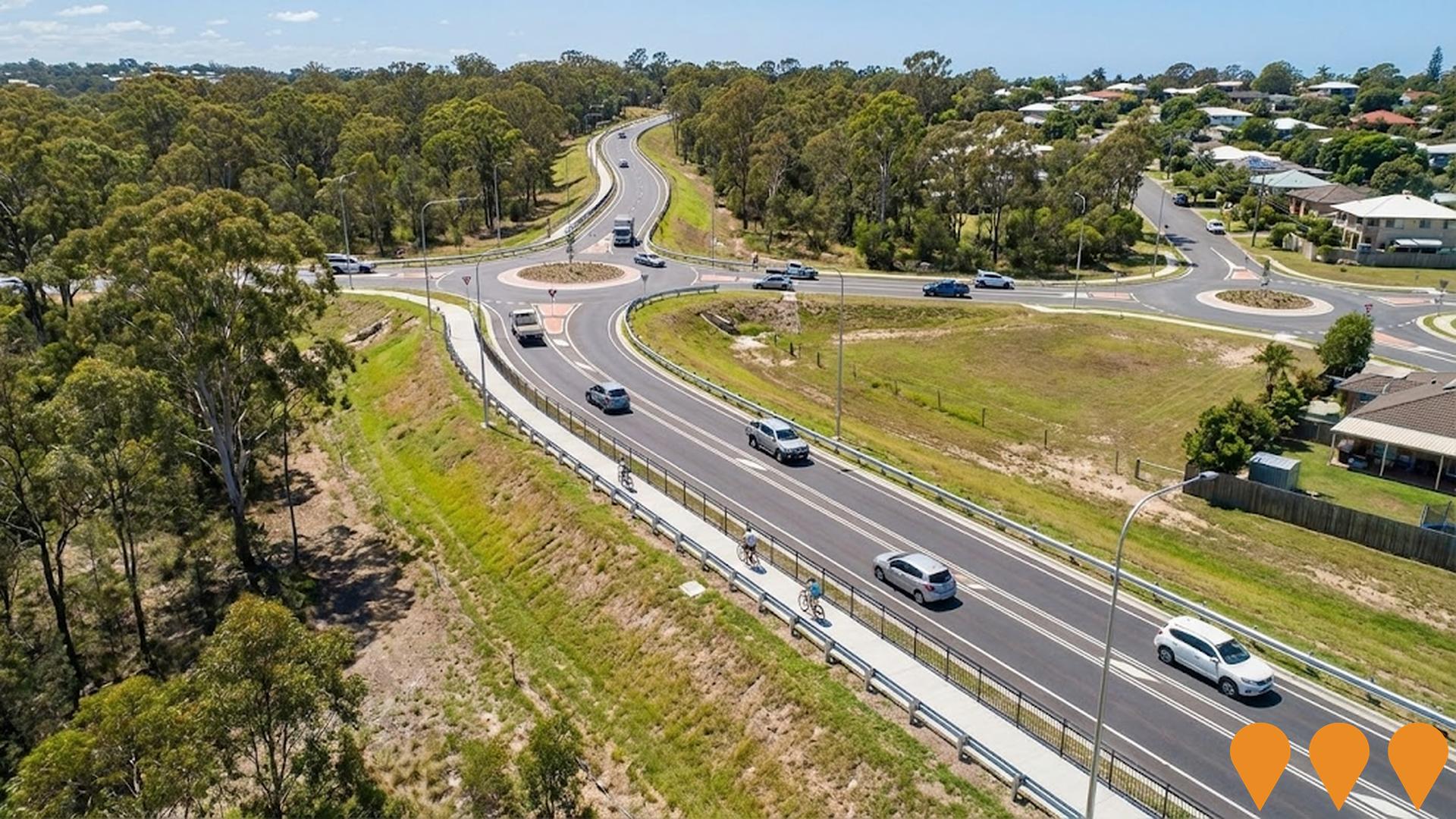
Moreton Bay Wildlife Hospital
Queensland's first dedicated wildlife hospital, providing emergency and critical veterinary care for native animals including koalas, kangaroos, birds, bats, possums, gliders, reptiles and marine turtles. The facility includes triage, surgery, ICU, rehabilitation areas and a public education hub.
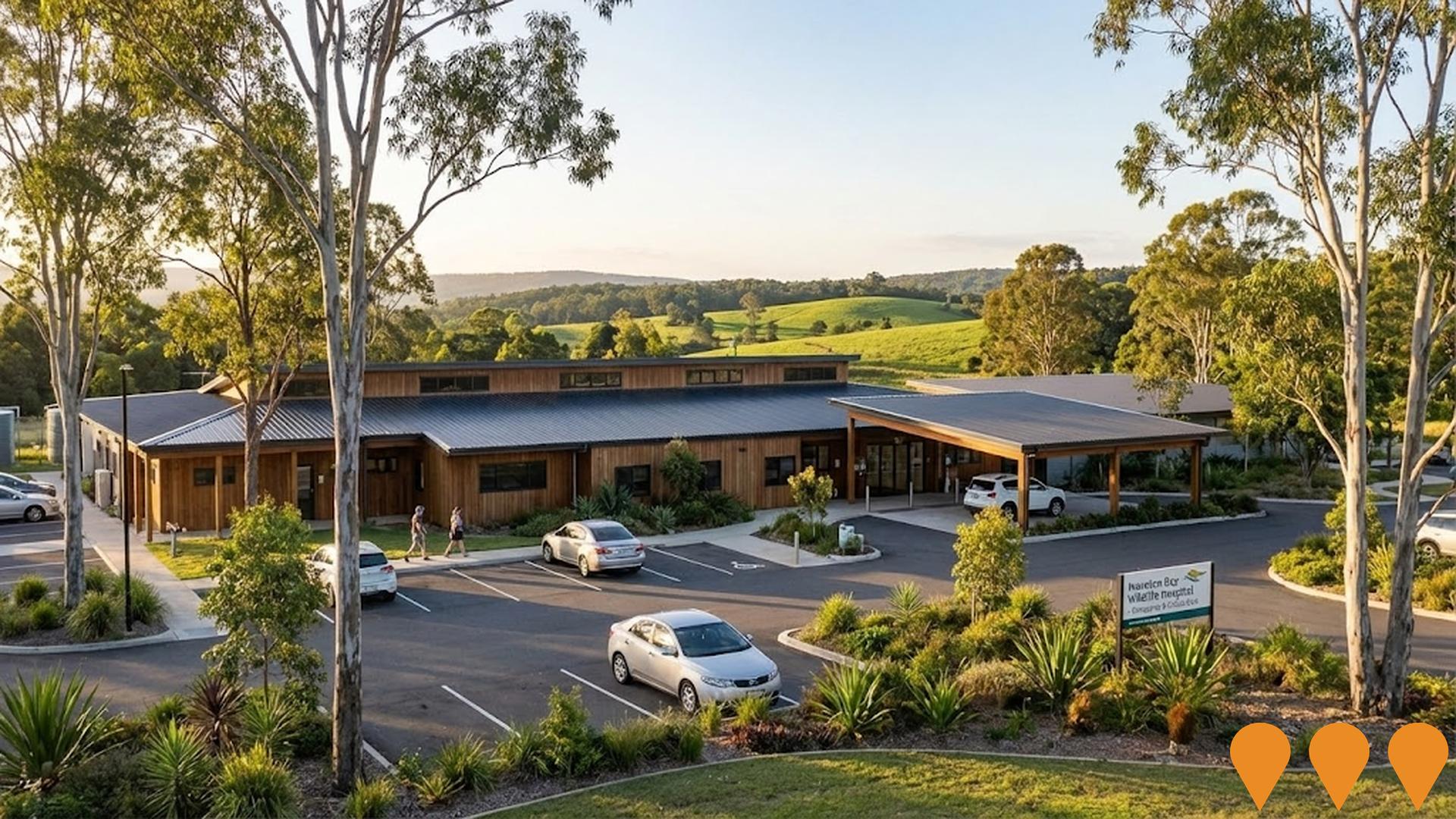
Kallangur Satellite Health Centre (Kalangoor)
Queensland's first satellite health centre with Minor Injury and Illness Clinic, Aboriginal and Torres Strait Islander Health Hub, oral health clinic, kidney health services including dialysis, and rehabilitation services. Open 7 days, 8am to 10pm. Part of Queensland's $377 million Satellite Hospital Program. Renamed to Satellite Health Centre in 2025 to reduce confusion.
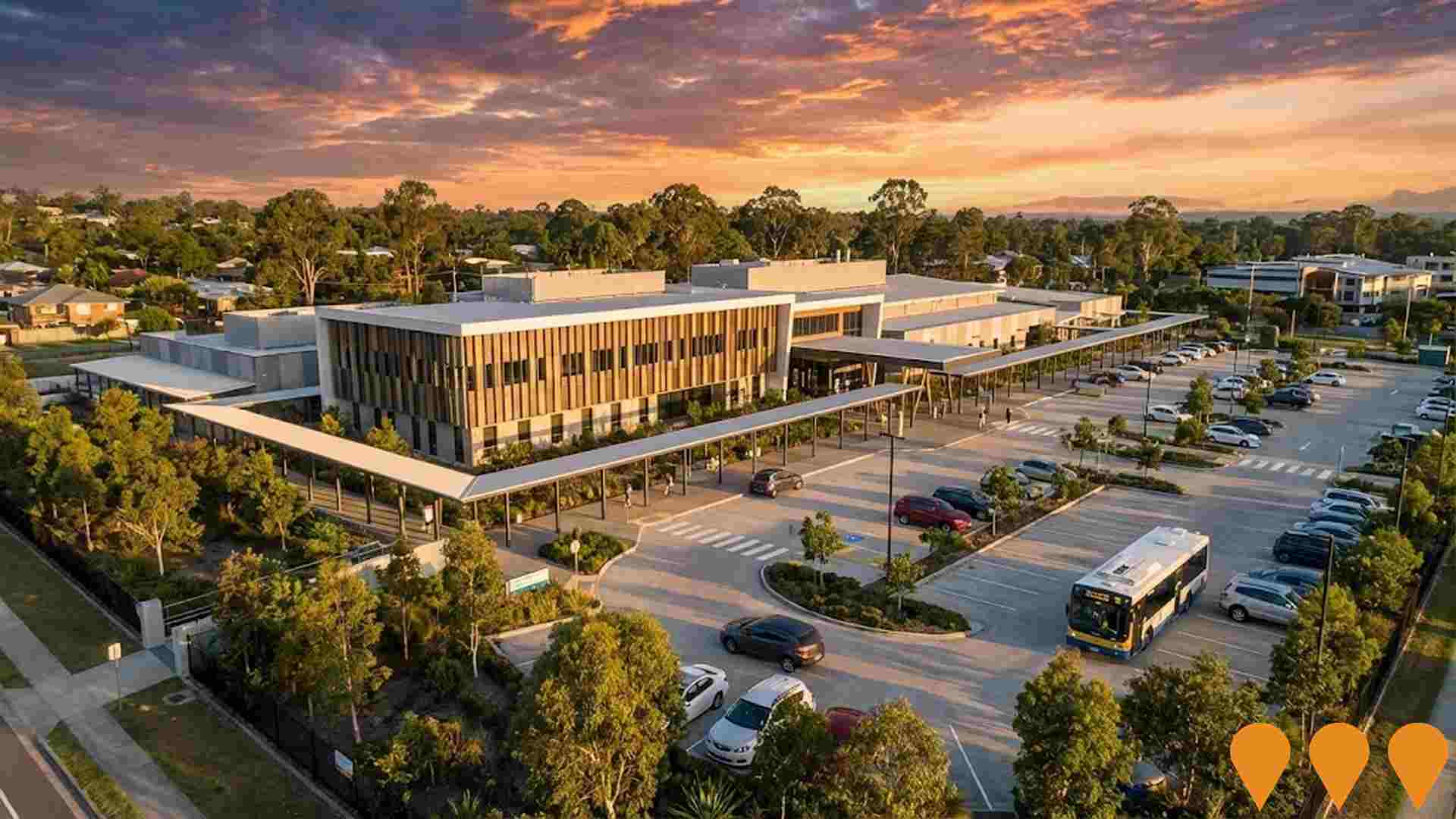
North Lakes Drive Mixed-Use Hotel Development
1.72 ha mixed-use development site opposite Westfield North Lakes, seeking expressions of interest for a 4-5 star hotel with conference and event facilities. The City of Moreton Bay is marketing the site for a landmark hospitality and tourism project to serve the growing North Lakes Town Centre and broader Moreton Bay region.

Bruce Highway - Anzac Avenue to Caboolture-Bribie Island Road Upgrade
Australian and Queensland Government-funded upgrade of the Bruce Highway between Anzac Avenue (Rothwell) and Caboolture-Bribie Island Road (Caboolture). The project widens the highway from 3 to 4 lanes each direction using the existing median between Anzac Avenue and Uhlmann Road, and introduces collector-distributor roads from Uhlmann Road to Caboolture-Bribie Island Road. Total estimated cost approximately $733 million (Anzac Avenue to Uhlmann Road section). Business case completed and approved for funding in 2024-25 Federal and State budgets. Detailed design and early works are underway, with major construction expected to commence 2026-2027 and completion targeted by 2032.
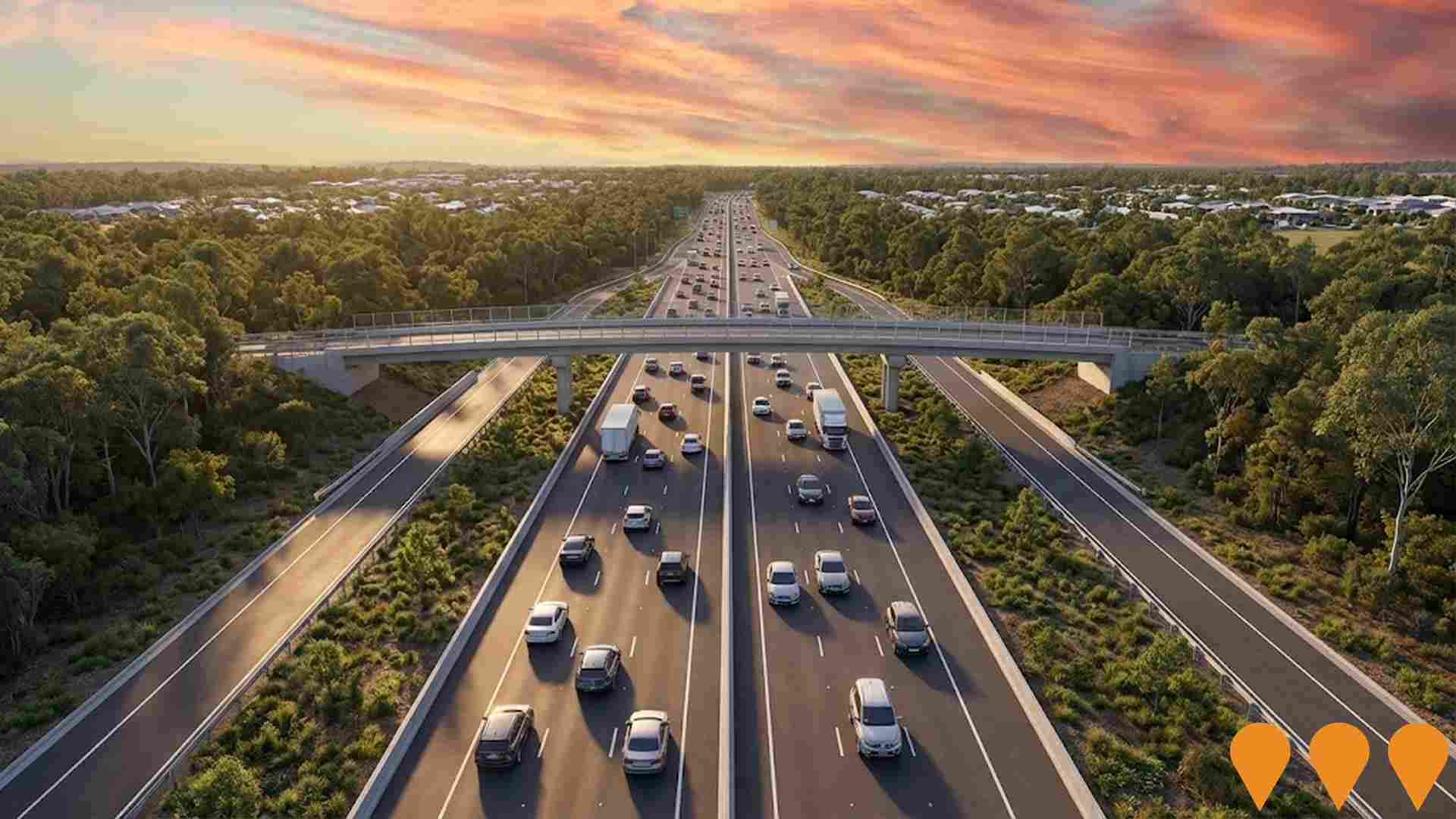
Redcliffe Peninsula Rail Line (Moreton Bay Rail Link)
The Redcliffe Peninsula Line, also known as the Moreton Bay Rail Link, is a 12.6 km dual-track electrified passenger railway extending from Petrie to Kippa-Ring in Queensland. It includes six new stations (Kallangur, Murrumba Downs, Mango Hill, Mango Hill East, Rothwell, and Kippa-Ring), 22 road and pedestrian bridges, 3.3 km of elevated viaducts, a 3-metre-wide shared pedestrian and cycle path along the corridor, and 2,850 park 'n' ride spaces with integrated bus interchanges. The line delivers approximately 650 weekly services, with peak frequencies of 6-12 minutes and a 45-minute journey to Brisbane CBD. Officially opened on 4 October 2016, the project was delivered for $988 million (under the original $1.147-1.2 billion budget range) and jointly funded by the Australian Government ($615 million), Queensland Government ($268 million), and Moreton Bay Regional Council ($105 million).
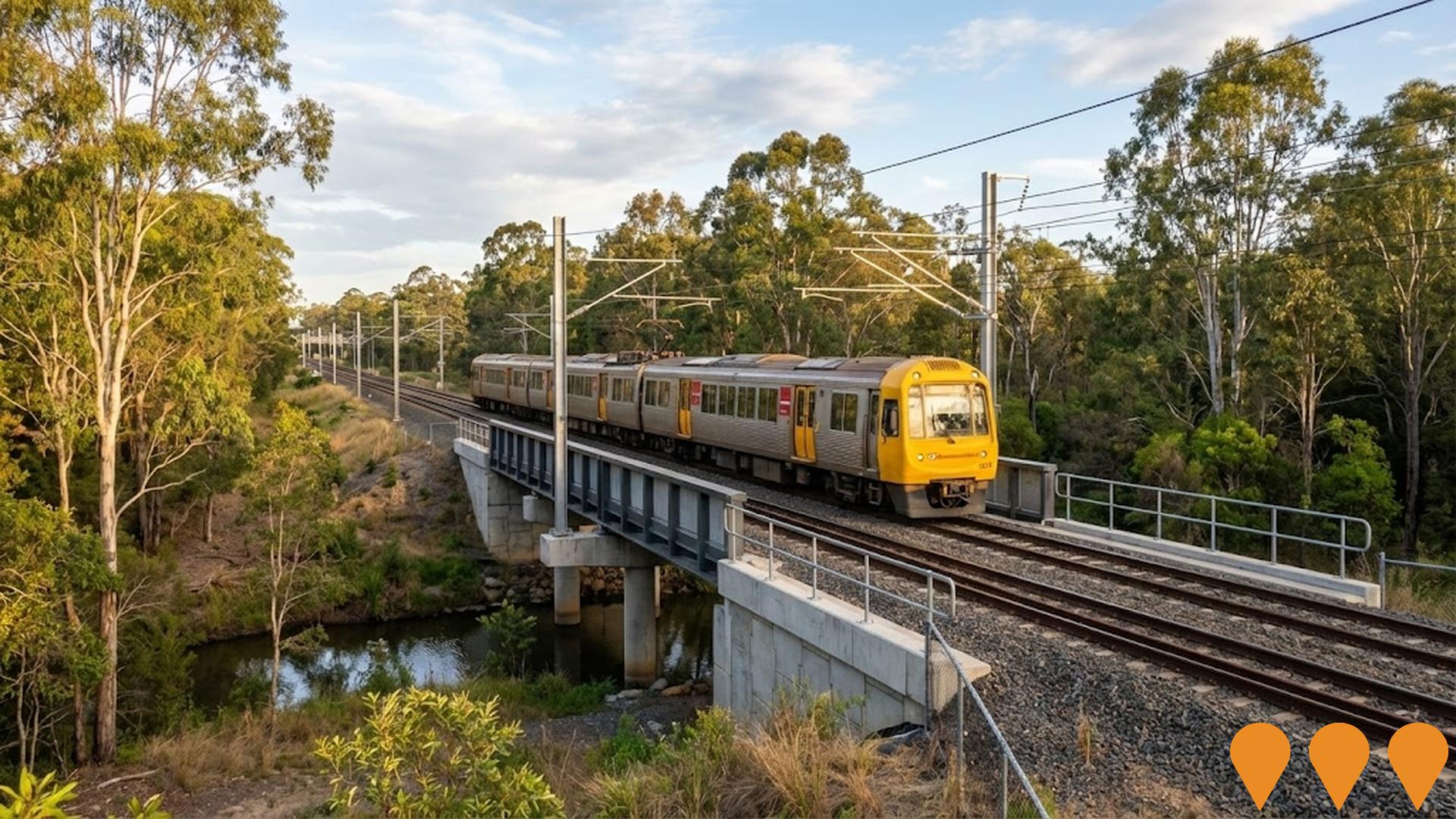
Kallangur-Dakabin Neighbourhood Planning Project
A neighbourhood planning initiative that has successfully created a Future Directions Report to guide growth and development in Kallangur-Dakabin. The area is projected to grow by 10,400 people by 2041, bringing the population to an estimated 38,000 residents. The endorsed report establishes a shared vision, strategies and actions for the area while considering local character and identity, with current population of 29,344 as of June 2024.
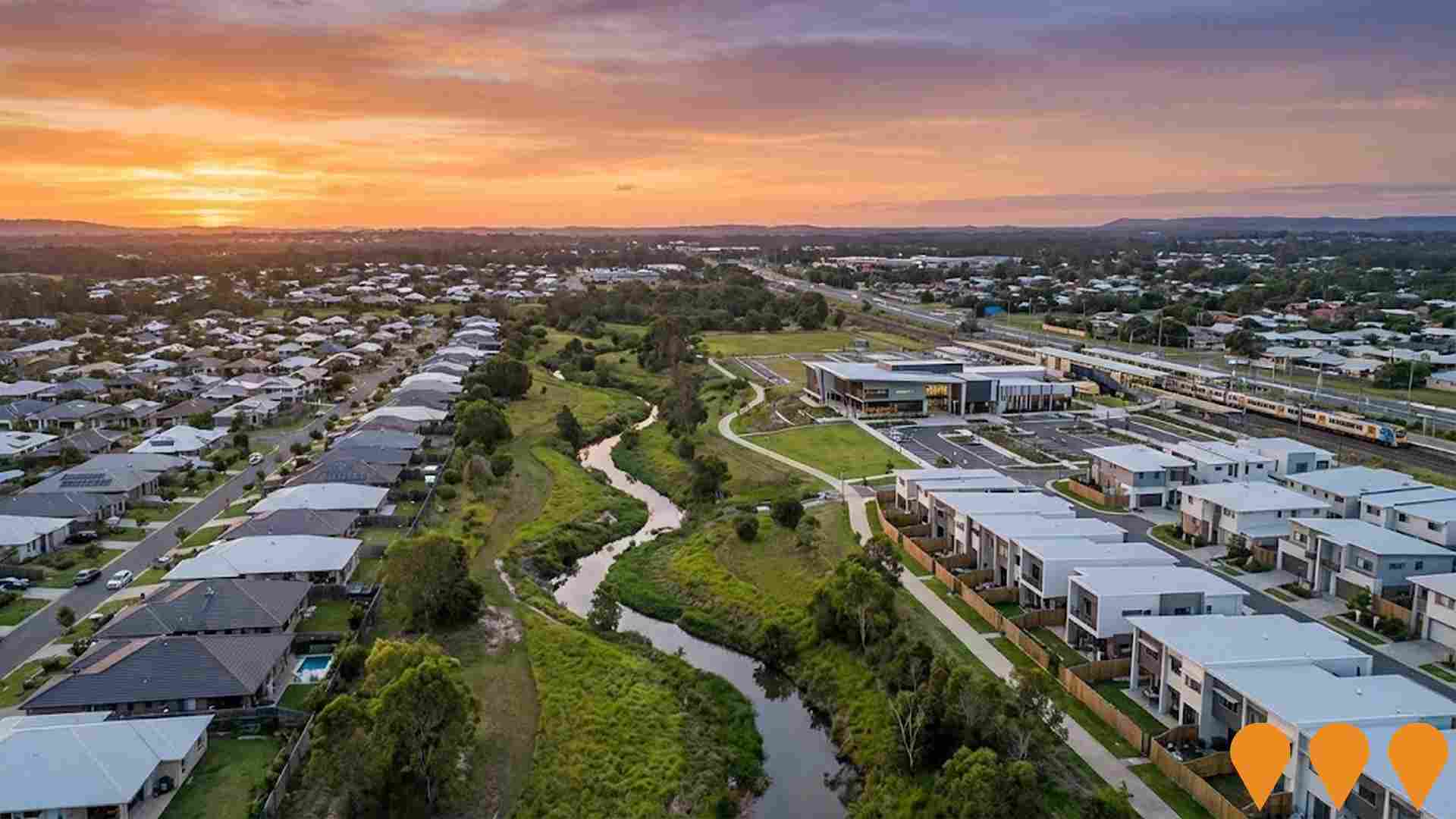
Employment
Dakabin has seen below average employment performance when compared to national benchmarks
Dakabin has a skilled workforce with significant representation in essential services sectors. The unemployment rate was 7.1% as of June 2025, showing room for improvement compared to Greater Brisbane's rate of 4.1%.
Employment growth over the past year was estimated at 6.4%. As of June 2025, 3,548 residents were in work and workforce participation was high at 71.6%, compared to Greater Brisbane's 64.5%. Dominant employment sectors include health care & social assistance, retail trade, and construction. Retail trade has a notable concentration with employment levels at 1.5 times the regional average.
Conversely, professional & technical services show lower representation at 5.5% versus the regional average of 8.9%. Employment opportunities locally may be limited as indicated by Census data comparing working population to resident population. Between June 2024 and June 2025, employment levels increased by 6.4%, labour force increased by 7.6%, resulting in an unemployment rise of 1.1 percentage points. In contrast, Greater Brisbane experienced employment growth of 4.4% and labour force growth of 4.0%, with a 0.4 percentage point drop in unemployment. Jobs and Skills Australia's national employment forecasts from May 2025 suggest potential future demand within Dakabin. These projections estimate national employment growth at 6.6% over five years and 13.7% over ten years, with varying rates across industry sectors. Applying these projections to Dakabin's employment mix suggests local growth of approximately 6.5% over five years and 13.6% over ten years.
Frequently Asked Questions - Employment
Income
Income levels align closely with national averages, indicating typical economic conditions for Australian communities according to AreaSearch analysis
Dakabin's median taxpayer income is $55,970 and average is $62,502 according to AreaSearch's aggregation of latest postcode level ATO data for financial year 2022. This is slightly below the national average, contrasting with Greater Brisbane's median income of $55,645 and average income of $70,520. Based on Wage Price Index growth of 13.99% since financial year 2022, estimated incomes as of September 2025 would be approximately $63,800 (median) and $71,246 (average). Census 2021 data shows personal income ranks at the 64th percentile ($877 weekly), while household income is at the 47th percentile. Income distribution indicates that 40.8% of Dakabin's population falls within the $1,500 - 2,999 income range, consistent with broader regional trends showing 33.3% in the same category. Housing affordability pressures are severe, with only 80.2% of income remaining after housing costs, ranking at the 43rd percentile.
Frequently Asked Questions - Income
Housing
Dakabin displays a diverse mix of dwelling types, with a higher proportion of rental properties than the broader region
Dakabin's dwelling structures, as per the latest Census, consisted of 58.4% houses and 41.6% other dwellings (semi-detached, apartments, 'other' dwellings). In comparison, Brisbane metro had 75.0% houses and 25.0% other dwellings. Home ownership in Dakabin was at 11.4%, with mortgaged dwellings at 26.3% and rented ones at 62.3%. The median monthly mortgage repayment in Dakabin was $1,800, lower than Brisbane metro's average of $1,820 and the national average of $1,863. The median weekly rent figure for Dakabin was $360, compared to Brisbane metro's $380 and the national figure of $375.
Frequently Asked Questions - Housing
Household Composition
Dakabin features high concentrations of group households, with a lower-than-average median household size
Family households account for 73.5% of all households, including 28.6% couples with children, 23.1% couples without children, and 20.7% single parent families. Non-family households make up the remaining 26.5%, with lone person households at 22.0% and group households comprising 4.4%. The median household size is 2.6 people, which is smaller than the Greater Brisbane average of 2.8.
Frequently Asked Questions - Households
Local Schools & Education
Dakabin performs slightly above the national average for education, showing competitive qualification levels and steady academic outcomes
The area's university qualification rate is 18.2%, significantly lower than Greater Brisbane's average of 30.5%. Bachelor degrees are the most common at 13.6%, followed by postgraduate qualifications (2.6%) and graduate diplomas (2.0%). Vocational credentials are prominent, with 44.7% of residents aged 15+ holding them, including advanced diplomas (12.6%) and certificates (32.1%). Educational participation is high at 34.2%, comprising 12.2% in primary, 8.8% in secondary, and 5.5% in tertiary education.
Dakabin State High School and Northpine Christian College serve a total of 1,935 students. The area has typical Australian school conditions (ICSEA: 1007) with balanced educational opportunities. It includes one secondary and one K-12 school, functioning as an education hub with 31.1 school places per 100 residents, above the regional average of 17.3, attracting students from surrounding communities.
Frequently Asked Questions - Education
Schools Detail
Nearby Services & Amenities
Transport
Transport servicing is moderate compared to other areas nationally based on assessment of service frequency, route connectivity and accessibility
Dakabin has eight active public transport stops, offering a mix of train and bus services. These stops are served by 53 different routes, facilitating 1,822 weekly passenger trips in total. Transport accessibility is deemed good, with residents on average located 334 meters from the nearest stop.
The service frequency averages 260 trips per day across all routes, translating to approximately 227 weekly trips per individual stop.
Frequently Asked Questions - Transport
Transport Stops Detail
Health
Dakabin's residents are relatively healthy in comparison to broader Australia with the level of common health conditions among the general population somewhat typical, though higher than the nation's average among older cohorts
Dakabin's health metrics are close to national benchmarks with common health conditions among its general population being somewhat typical but higher than the national average among older cohorts.
Approximately 51% of Dakabin's total population (~3,183 people) has private health cover, which is slightly lower than the average for SA2 areas. The most prevalent medical conditions in Dakabin are mental health issues and asthma, affecting 13.2 and 9.6% of residents respectively. Conversely, 67.5% of Dakabin's residents declare themselves completely clear of medical ailments compared to 69.9% across Greater Brisbane. Dakabin has 9.0% of its population aged 65 and over (559 people), which is lower than the 11.6% in Greater Brisbane. However, health outcomes among seniors require more attention due to presenting some challenges.
Frequently Asked Questions - Health
Cultural Diversity
The level of cultural diversity witnessed in Dakabin was found to be above average when compared nationally for a number of language and cultural background related metrics
Dakabin's cultural diversity was found to be above average, with 12.6% of its population speaking a language other than English at home as of the last census on 28 June 2016. Additionally, 23.9% of Dakabin's population were born overseas by this date. Christianity was identified as the main religion in Dakabin, with 44.5% of people adhering to it.
However, the most notable overrepresentation was observed in the 'Other' religious category, which comprised 1.4% of Dakabin's population compared to 2.7% across Greater Brisbane. In terms of ancestry, the top three represented groups in Dakabin were English at 28.6%, Australian at 25.9%, and Other at 8.3%. Notably, certain ethnic groups showed significant divergences: New Zealanders made up 1.7% of Dakabin's population compared to 1.5% regionally, Maori comprised 1.8% versus 1.7%, and Samoans accounted for 1.6% versus 1.3%.
Frequently Asked Questions - Diversity
Age
Dakabin hosts a very young demographic, ranking in the bottom 10% of areas nationwide
Dakabin has a median age of 30, which is younger than Greater Brisbane's figure of 36 and significantly below Australia's median age of 38. Compared to Greater Brisbane, Dakabin has a higher proportion of residents aged 25-34 (19.7%) but fewer residents aged 75-84 (2.4%). This concentration of 25-34 year-olds is considerably higher than the national average of 14.5%. Between 2021 and now, the proportion of Dakabin's population aged 35 to 44 has increased from 14.8% to 15.8%, while the proportion of those aged 15 to 24 has decreased from 15.3% to 13.8%. By 2041, demographic projections indicate significant changes in Dakabin's age structure. The number of residents aged 45 to 54 is expected to rise by 352 people (48%), from 731 to 1,084. Conversely, the number of those aged 25 to 34 is projected to decrease.

